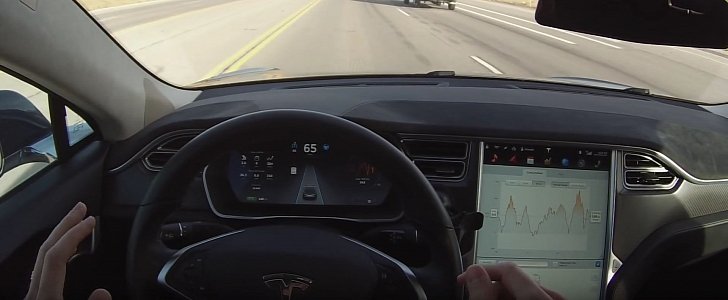If gathering as many miles on the road as possible was enough to win the autonomous car development race, we'd have a clear winner. Tesla announced today that its users have stacked up over 100 million miles while using the Autopilot feature since it was first introduced in 2015.
Each day, Tesla drivers provide the company with approximately 2.6 million miles of using the Autopilot function, which is more than the 1.5 million Google has to show for since it initiated its self-driving car program in 2009.
Tesla first introduced the Autopilot hardware to its cars in 2014. It sold those cars for a whole year before enabling the features via one of its wireless updates in 2015. This way, it was able to allow the cars to collect a lot of empirical data before making sure all the features were safe enough to be unlocked. The company is most likely going to use the same technique in the future as well as it continues to develop the system towards its ultimate goal: making Teslas the first fully-autonomous vehicles.
With over 70,000 cars on the roads right now, Tesla has clearly got the largest test fleet of all companies involved in developing this technology, so it all depends now on how well it can manage this huge amount of data. It's true that the Autopilot function is used almost exclusively on highways, but the sensors continue to be active even with the Autopilot switched off in urban environments as well.
If they gave it enough thought, Tesla drivers might end up feeling like some sort of lab rats, and just any kind, but those that had to pay good money for this privilege. In the end, though, they will be the ones to benefit from all this involuntary field research when their cars will be upgraded overnight to the next level autonomous driving.
Besides those 100 million miles driven with the Autopilot active, Teslas have clocked a whopping 780 million miles across all hardware-equipped cars. Google brags with the ability to cover three million simulated miles in its labs, as well as its cars focusing more on the urban environment, but we're still to see how effective those are. And even though we're making it sound like this was a two-horse race, Volvo, Mercedes-Benz, Audi, and others are just around the corner.
You can't help but feel that if all these companies put their efforts together, the whole thing would be solved a lot quicker. But the automotive industry is still as competitive as ever, so there will be none of that. Some alliances will be struck, sure, but we will always have more actors on the scene. Let's just hope that that thing they say about competition being the mother of innovation is indeed true.
Tesla first introduced the Autopilot hardware to its cars in 2014. It sold those cars for a whole year before enabling the features via one of its wireless updates in 2015. This way, it was able to allow the cars to collect a lot of empirical data before making sure all the features were safe enough to be unlocked. The company is most likely going to use the same technique in the future as well as it continues to develop the system towards its ultimate goal: making Teslas the first fully-autonomous vehicles.
With over 70,000 cars on the roads right now, Tesla has clearly got the largest test fleet of all companies involved in developing this technology, so it all depends now on how well it can manage this huge amount of data. It's true that the Autopilot function is used almost exclusively on highways, but the sensors continue to be active even with the Autopilot switched off in urban environments as well.
If they gave it enough thought, Tesla drivers might end up feeling like some sort of lab rats, and just any kind, but those that had to pay good money for this privilege. In the end, though, they will be the ones to benefit from all this involuntary field research when their cars will be upgraded overnight to the next level autonomous driving.
Besides those 100 million miles driven with the Autopilot active, Teslas have clocked a whopping 780 million miles across all hardware-equipped cars. Google brags with the ability to cover three million simulated miles in its labs, as well as its cars focusing more on the urban environment, but we're still to see how effective those are. And even though we're making it sound like this was a two-horse race, Volvo, Mercedes-Benz, Audi, and others are just around the corner.
You can't help but feel that if all these companies put their efforts together, the whole thing would be solved a lot quicker. But the automotive industry is still as competitive as ever, so there will be none of that. Some alliances will be struck, sure, but we will always have more actors on the scene. Let's just hope that that thing they say about competition being the mother of innovation is indeed true.

